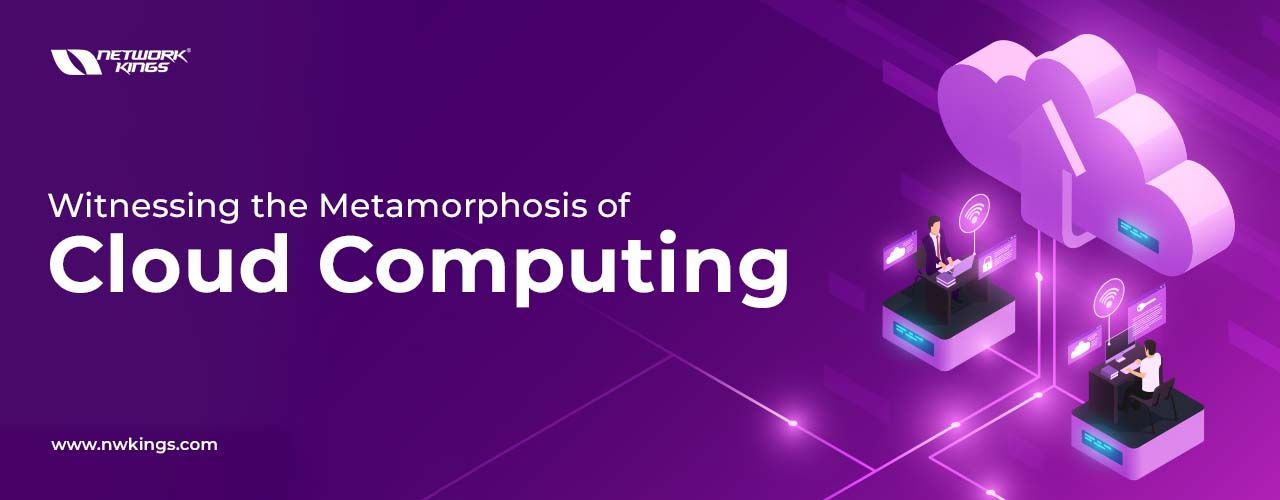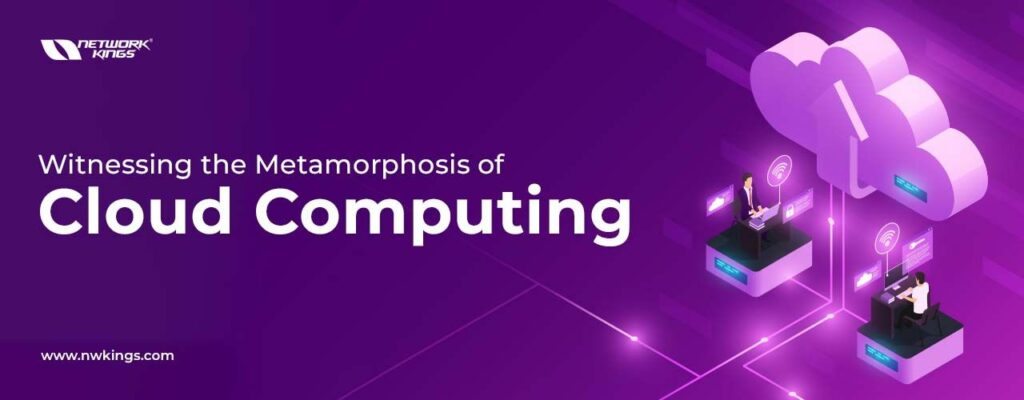
Let us discuss the evolution of cloud computing in IT. The start of the 21st century has brought about a massive transformation in cloud computing. From the mid-2000s onwards, there have been remarkable leaps and bounds made in the field of computing that have allowed for considerable growth.
These days, it is all about cloud technology – business entities from around the globe are investing heavily in this modern boon to make their operations more efficient. Let us take you through how exactly these latest technologies work; we will even delve deep to figure out how they are affecting our lifestyles!
Defining the Concept of Cloud Computing

The idea of cloud computing is often muddled up and wrongly interpreted. This is not astonishing, though, given that the science behind it is intricate and ever-developing. It can be explained as a way for people to access applications, storage space and other IT resources on demand from remote locations or what we name ‘the cloud’.
To put it simply, it includes making use of the internet to store data instead of holding onto them on an internal hard drive or server. Using cloud computing organizations can save money by not having to get high-priced hardware and software right away – how amazing!
As organisations started moving away from conventional technologies such as physical servers and desktop PCs, they adopted cloud computing, allowing more flexibility, scalability and cost savings. Nowadays, cloud computing is an essential component for business operations with over a third of all companies already using some type of cloud technology – not to mention that this sector itself is worth around 200 billion dollars! And it just continues growing quickly without showing any signs of stopping soon.
Considering the transition in which cloud computing has been through many sectors like education, healthcare or banking and finance – its impact has gone far beyond providing means for online learning within educational institutions or storing sensitive documentation securely in financial ones; it’s enabled innovation thanks to its user-friendly structure plus scalability qualities offering tailor-made solutions each organisation needs right off the bat without having them invest much money on new infrastructure or equipment at first go.
History and Origin: Evolution of Cloud Computing
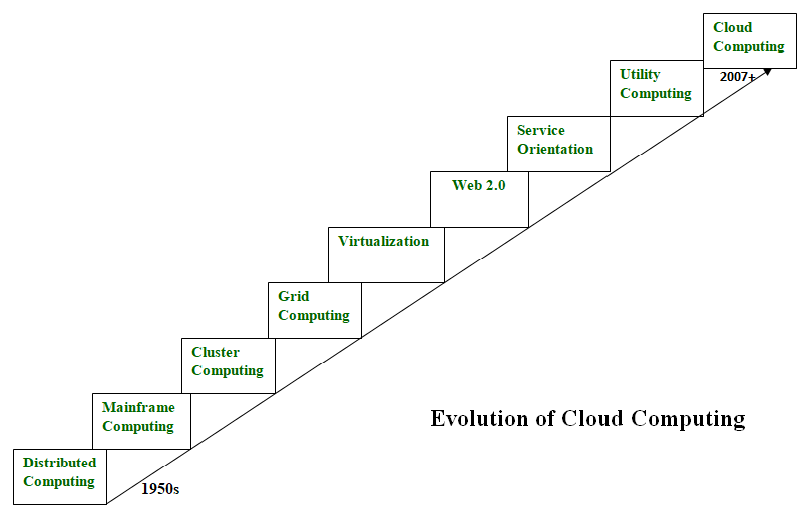
The idea of cloud computing has been around for the past two decades but originated way back in the 1960s. It was American computer scientist John McCarthy who first used this term while referring to a network of computers. The development and advancement of cloud technology then saw an exponential increase after that point. around the late 1990s is when software-as-a-service (SaaS) began rising in popularity within IT circles – this gave us further evidence as to how influential clouds have become on everything tech-related!
This was one of the very first ideas connected with cloud computing, which provided companies with a way to get access to software without needing to buy physical copies or commit resources in-house. Back in 2002 Amazon Web Services (AWS) unit came into being – now it’s one of the biggest clouds accessible today! AWS took off rapidly and revolutionised how businesses save and control data by making it highly cost-efficient as well as adaptable.
A decade later, Google presented its platform entitled Google App Engine (GAE). Who would have anticipated then that such platforms would take over our day-to-day operations?
GAE was a bit dissimilar to AWS as it proposed services particularly formed for app developers. It had an enormous range of APIs and tools that made crafting potent applications simpler than ever before – this started a wholly new period for cloud computing and provided us with unbelievable paths which we couldn’t have imagined prior.
It’s utterly great how much the technology has progressed over time, from being just a mere networking abstraction notion to such necessary tech in present times – cloud processing surely traversed quite far within two decades! The tale behind all this is engrossing and motivating concurrently- offering us uncountable possibilities for further development and enhancement inside this perpetually changing area!
Milestones in the Development of Cloud Computing
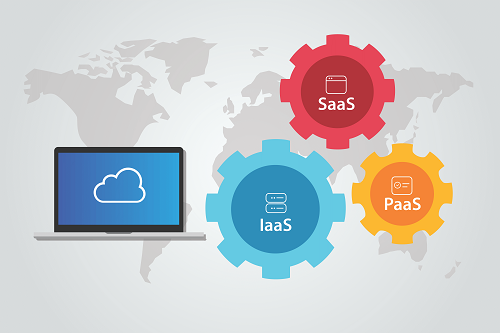
Cloud computing has come a long way since it was first conjured up in the late 1960s. If we take stock of its progress over time, several major milestones have been achieved along the way. The earliest one came to fruition in 1969 when SDS-CIC set up the world’s initial computer network – kickstarting cloud computing as we recognize it today and establishing groundwork for additional breakthroughs down the line. fast forward nearly 30 years later and Sun Microsystems took things to another level with their Jini launch in 1998 – marking yet another momentous milestone on this journey!
A game-changer arrived in the shape of this product, which allowed computers from various backgrounds to collaborate through a common protocol known as Java Remote Method Invocation (RMI). This made cloud computing less intimidating than ever before and exposed businesses to new opportunities when it came to how they take advantage of cloud services.
The third throttle was hit by Amazon Web Services (AWS) back in 2002 with their ‘Elastic Compute Cloud'(EC2). AWS completely shook up companies’ ability to both access and use clouds – its scalability instantly enabled them to match demand much faster; if you needed more capacity in one minute, you had it ready without breaking a sweat!
This gave businesses greater mobility and an opportunity to reduce the costs of both hardware and software when it comes to traditional hosting solutions. Taking things even further, the Google Cloud Platform came into play in 2008, bringing with it some amazing features such as Google App Engine and Compute Engine. And now, organisations have unlimited scalability, consistency as well and performance that outrun other cloud providers – what more could you ask for?
Ultimately, Microsoft Azure is undoubtedly one of the paramount steps in cloud computing development as it provides a full set of utilities to upload applications from any device or wherever you are with their great public clouds. What’s more incredible about this thing is that unlike traditional server systems which require physical presence for installation and configuration purposes, these public clouds make everything available at your fingertips!
What’s more, Microsoft Azure also brings a range of awesome features to the table such as machine learning API which helps customers glean valuable knowledge from their data sets. Plus we have IoT capabilities that allow different devices and platforms to communicate with each other securely – not forgetting identity management systems for organisations who need total control over who can access their cloud-stored info.
All these advancements have revolutionised the way we view cloud computing, making it easier than ever for businesses around the world to reap its benefits too! With new developments surfacing daily in this tech sector there’s no denying that using cloud computing is becoming increasingly accessible – so what are you waiting for?
Understanding the Cloud Revolution

As the world of technology progresses, so does cloud computing. The Cloud Revolution has been a huge element in this evolution – but what exactly is it? Knowing the basic principles of cloud computing is vital for appreciating its effect on businesses around the globe. Prototypically, cloud computing refers to storing and accessing data via online means rather than tangible storage devices like hard drives. In recent years, that has burgeoned dramatically due to larger providers selling more services across an increasingly fierce marketplace.
With cloud computing services, businesses can access software applications and save critical information without having to invest in costly hardware. This makes life a lot easier for them, as there are many advantages: cost-effectiveness by freeing up resources; improved scalability with the ease of adding or removing capacity; heightened reliability due to reducing risk from potential hardware malfunctioning; increased versatility which lets organisations mess around with different solutions if they want to – plus you get mobility enabling staff members remote access anytime they need it through any device.
Cloud computing isn’t going anywhere soon either! It has drastically changed how businesses work now and will keep pushing towards smarter working methods later down the line too.
Advancements in Computing and their Effects on Cloud Evolution

Cloud computing has come a great distance since it first came about, which isn’t surprising considering the massive rise in popularity of this technology over recent years. It all began as an inventive concept to link up distant networks and soon developed into a game-changing instrument that supports companies in utilising their IT resources more expediently. Computing advancements have proved invaluable for cloud progression – making everything simpler, swifter and much cheaper! How remarkable is that?
To kick things off, better processor speeds have enabled cloud providers to send data between the server and client dramatically faster. This means that companies can access massive amounts of data right away without having to go through the tedious slow processing experienced in older systems. And with more rapid processors comes even greater analytics which are a great way for businesses to get an insight into how they’re performing.
Moreover, increased storage also requires less manual maintenance such as defragmentation or backup tasks across the organisation’s network infrastructure – meaning there is no need for these tiresome procedures anymore! What does this mean? Well, it could be game-changing if used correctly; potentially allowing you to gain crucial insights like never before while avoiding time-consuming technical chores to save costs and increase efficiency.
The combination of all these elements has resulted in decreased costs associated with cloud services as there is no longer any need for added hardware or human resources working on tasks manually. For instance, before it could take a full day to do things like running backups and monitoring system performance – now the majority of those processes can be completed within minutes by utilizing automated systems available from the cloud service providers.
Likewise, progressions in virtualization technology have allowed cloud suppliers to give their customers more choices when renting computation capability from them. This means that businesses don’t have to worry about procuring extra physical machines; instead, they just procure server power which is cost-effective and time-saving!
Virtual machines (VMs), with their ability to handle multiple applications at the same time, enable customers to adjust their resources depending on demand rather than running operations directly through hardware which could be expensive. Thanks to these tech advancements, many businesses have made considerable improvements in operational efficiency and achieved greater speed when it comes to tackling IT problems as they don’t need any extra resources from cloud platforms other than what is already available there. This obvious progression of cloud technology over recent years has only been possible due to all the groundbreaking developments in computing – a huge milestone indeed!
Examining the Growth of Cloud Computing

Reflecting on the evolution of cloud computing, it’s remarkable to think that what started as an idea has grown into one of today’s most influential technologies. It’s been quite a journey and encourages us when we look back at how far these innovations have come. To comprehend this better, let’s delve further in and explore its beginnings.
Cloud computing was birthed by computer scientists who believed they could store data more effectively across multiple computers instead of relying solely upon physical servers – something which seemed almost unthinkable all those years ago!
Cloud computing changed the game when it enabled businesses to access and store data quickly, securely and reliably – something which was not possible before. Major tech firms saw this as an investment opportunity so they began pouring money into its development; a key moment that helped propel cloud computing forward in terms of innovation. For example, Amazon Web Services (AWS) offered solutions at much lower cost compared to traditional hosting services, providing financial aid during 2020’s economic crisis. This gave companies welcome relief in uncertain times!
Not long after organisations began to realise the many advantages of cloud computing could bring them – from scalability and cost-efficiency to improved collaboration across teams. Microsoft Azure’s machine learning tools for data analysis purposes and hi-tech security protocols have certainly boosted the uptake of cloud services globally among businesses both big and small.
This increased use has made it an essential part of modern workflows and processes today. We’re even seeing more growth in this area with companies acknowledging how they can benefit greatly – better collaboration amongst staff, greater customer engagement by going digital, and speedier delivery times via automated solutions… all these features make sure you never miss a beat while staying ahead on progress in our everchanging world!
Revolutionary Aspects of the Cloud Transformation

The cloud transformation has been nothing short of revolutionary since it all began. It brought with it a range of new solutions that could help businesses and organisations achieve more than ever before. They were able to scale their operations up or down in minutes, process data faster and store it securely – something unimaginable previously without investing heavily in costly hardware and software physically present at the office premises. This was an absolute game changer for small companies who couldn’t even dream about gaining access to such enterprise-level solutions due to lack of resources!
The revolution in cloud computing has also had a big impact on the way we see our IT infrastructure. Instead of having to set up multiple servers across different countries, businesses can now store all their data in one place and connect outlying offices with just one connection – this saves them lots of money by reducing hardware costs as well as making it easier for their network setup.
Another huge advantage is that companies can quickly increase or decrease the amount of computing power they have depending on what’s needed at any given time, meaning there’ll never be more (or less) resources than necessary used up! Sounds like an amazing system, doesn’t it?
No matter how complicated an application might be, users can trust Cloud platforms for swift deployment and economical management. What’s more is the potential of fast innovation cycles due to technologies like containers which permit developers to handle applications more effectively and quickly launch new features into production environments without needing manual setup or waiting ages. This helps companies keep up with customer demands while staying adaptable and competitive in a continually shifting market environment.
Cloud computing has made huge impacts not only on organisations but also on our daily lives – from streaming services such as Netflix, and online gaming platforms like PlayStation Now and Xbox Games Pass being accessible over the internet instead of having to buy physical media; all these are possible because of the omnipresence of Internet and emergence of Cloud Computing within homes & offices too! Imagine life today without speedily sharing your special moments across continents using social networks such as Facebook and Instagram; this would have been quite difficult years back prior cloud technology was around!
Cloud Computing's Impact on Businesses and Individuals
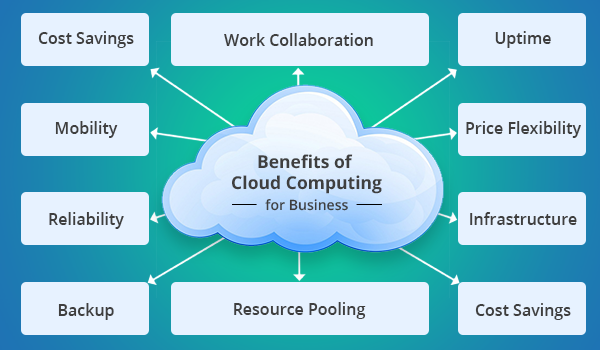
The progression of cloud computing has been extraordinary. From its modest start to the powerhouse it is now, cloud computing has had a major influence on businesses and individuals alike. For companies, cloud computing has made technology more obtainable, allowing them to become nimbler and adaptable while helping them save time and money.
They can scale up or down as required with ease nowadays – which is invaluable in volatile economic conditions or when dealing with data-heavy projects. As for individuals, they’re granted admission to an extensive range of services thanks to cloud computing; from online storage solutions through remote work tools! How incredible that such sophisticated technology can be accessible to everyone?
It’s no big shock that the requirement for these services is still on the rise – between 2017 and 2018, the global public cloud services market saw a 21% increase in revenue alone. This makes it clear just how much potential there is when you tap into what clouds can offer us! But not only does this create a significant opportunity to grow — it also sets off an unstoppable revolution in our relationship with technology itself.
By utilizing automation through cloud computing, we are now able to get machines to do complex tasks which would have usually taken a lot of human effort; like analysing vast datasets or creating marketing campaigns automatically. It takes away some of the manual hard work from people and gives them more capacity for creativity whilst working.
This concept known as “machine learning” is one of the most important parts of any modern business today. By using this data, companies can become even more productive by taking customer information and utilising it in new ways without having to pay huge sums upfront for personnel or hardware solutions.
Of course, there are still some worries about safety and privacy when depending on a third-party service provider for major data requirements but usually, providers offer strong security methods which help reduce those problems – making it easier than ever before for firms and individuals alike to make use of what cloud computing has got to give without risking their info integrity. As cloud technology goes on developing quickly, we’re sure that we’ll be seeing amazing progressions both with our own lives and business activities – all thanks to this effective tool!
Predicting the Future of Cloud Computing Growth
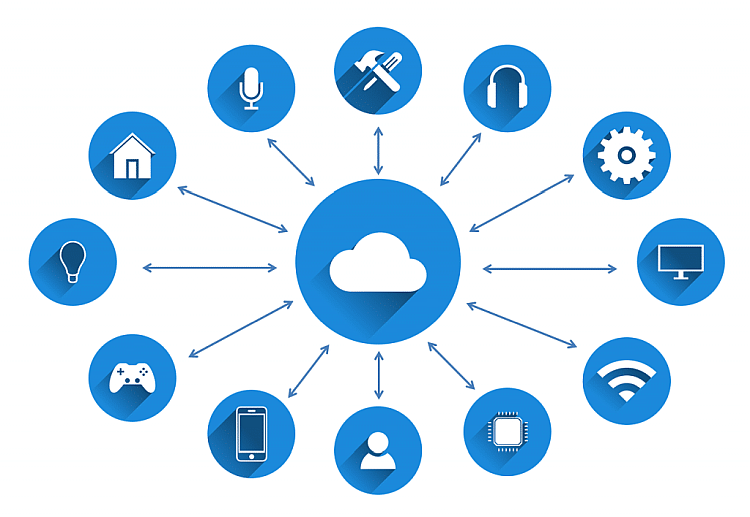
Cloud computing is a real trend that’s been on the rise over the past ten years, bringing about massive changes in how data, applications and services are accessed. Companies all around the world have their eyes fixed on what will happen with cloud computing in future – it’s an important thing worth considering when looking at potential shifts which could help shape its growth for better or worse. Increased bandwidth availability and greater storage capacity give us little doubt that they’ll play an instrumental part as we move forward into this technology’s advancement.
Cloud computing makes the sharing and distribution of services, applications and data across multiple gadgets effortless without having to worry about local storage problems. With internet speeds getting faster this could make an even greater impact on how cloud technology progresses further.
Additionally, AI applied with cloud systems is likely to become ever more popular too; helping reduce costs from manual labour and boosting efficiency by optimising processes as they’re requested in real-time. This form of automation through AI can ensure that user requirements are met quickly without any mistakes or time lags -how incredible!
As businesses evolve, so does their requirement for a variety of cloud solutions which must be tailored to the specific industry needs and customer requirements. Organisations need to explore how they can use cloud services as part of staying competitive within their respective markets and industries.
This requires companies to have an understanding of how existing services can integrate with new solutions like mobile-based ones – this makes it possible to access data from any location at any time while still keeping secure from potential external threats or hacking attempts; encryption plays a key role here in order ensure security protocols adhere too correctly.
Having advanced encryption techniques means companies can keep private info secure even if it’s accessed through public networks or unstable links. People and businesses need to understand the effects of cloud computing, so they can make educated choices when using new technologies or transferring existing ones onto a diverse platform/system architecture.
Staying up-to-date with all the developments around cloud growth ensures companies don’t lose out in terms of their technological advancement and performance over time – no matter whether they are dealing with personal clouds or third-party suppliers like AWS and Microsoft Azure respectively. Are you leveraging such trends?
The Role of Computing Advancement in Shaping Cloud Evolution
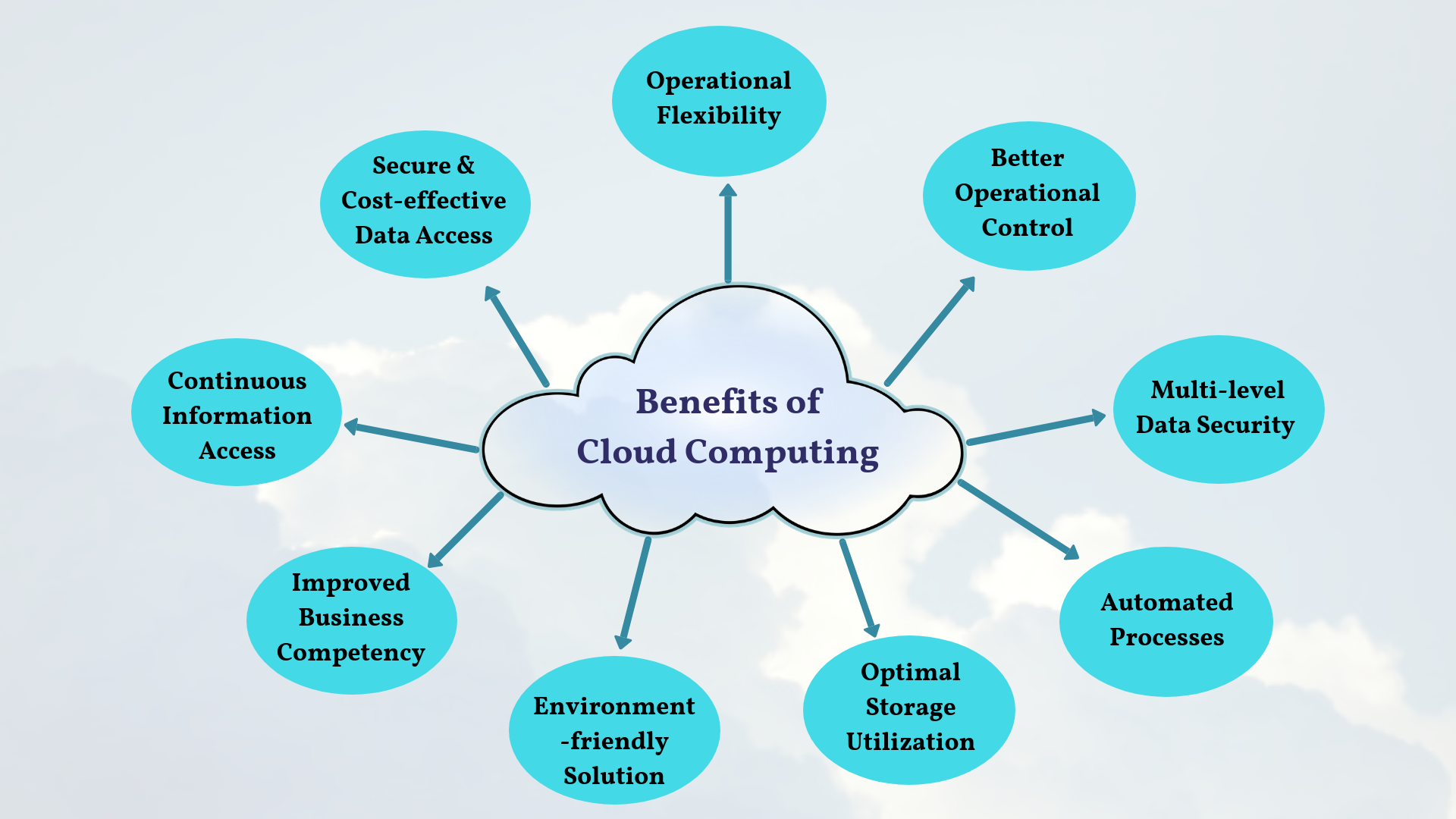
The development of computing advancements has been one of the most fundamental factors in shaping modern cloud technology. Practically every aspect related to tech saw a huge upsurge in terms of speed, capacity and scalability; this being implemented into more sophisticated applications running on clouds is even truer. Especially Azure or AWS as far as their storage solutions go – these can store large amounts of data which isn’t something servers nor physical hard drives could have done before because they simply lacked that type of space available. It’s just revolutionary what kind of enormous changes we can see thanks to all the new advances!
As technology continued to evolve, the ability of organisations to control and manage their data with greater agility increased. With advancements in processor design and memory usage, they now have more power over how information is accessed and stored than ever before. Plus, cloud computing enabled them to take advantage of high-speed internet connections which meant that transferring files between distant locations became a lot faster – this created an improved way for businesses across multiple countries or regions to be able to collaborate effectively on documents, media content or software applications. But what’s next? How will organisations use these new technologies available at their fingertips?
The development of communication protocols such as TCP/IP, FTP and HTML helped take the trend further by enabling businesses to securely transfer information over various networks without being dependent on one provider. At the same time, cloud computing became increasingly accessible due to its huge adoption which drove down prices associated with infrastructure hosting, licensing fees and personnel costs.
This meant that organizations could now make use of cloud solutions whereby they would only pay for what they needed rather than investing in dedicated hardware or software assets ahead of time – giving them greater suppleness when it comes to deploying their resources while remaining within budgetary limits at the same moment.
Innovations in computing have had an immense impact on changing how we approach clouds since nearly two decades ago; from storage capabilities through networking speeds all along with efficient resource usage up until cost savings – organisations can today obtain both performance upgrades alongside financial advantages just by embracing these advancements instead compared to traditional approaches deployed prior this era’s technological progressions.
Wrapping Up!
To sum up, the development of cloud computing has had a truly amazing impact on how organisations use technology. Progress in computing power has enabled companies to enhance their efficiency, broaden activities and maximise profits. As the wave of digitisation persists with strong momentum, the creativity and potential that cloud technologies have are boundless – opening doors for both businesses and individuals globally. The proliferation of cloud-based applications across all sectors proves there is no doubt it will remain an essential part of our future going forward!
Fancy becoming a cloud architect? Then our Cloud Architect Master Program is for you! This program offers the resources to perfect your skills and achieve success in this enviable field. With engaging online lectures, hands-on assignments, real-world projects with industry pros on hand plus interactive webinars – understand security protocols and optimise performance like never before.
Our flexible study options make learning convenient too; whether it’s at-home distance learning or part-time classes to fit around work commitments – whatever suits YOU best! Don’t delay; enrol today and give yourself fantastic opportunities within the fascinating world of cloud architecture!
Happy Learning!

